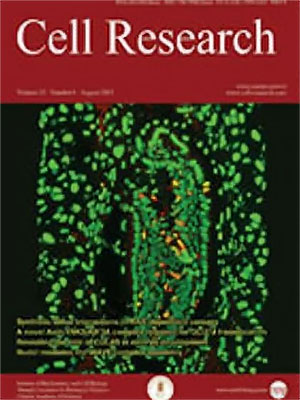Volume 13 Issue 4, August 2003: 239-249
REVIEWS
Drug resistance in the sexually transmitted protozoan Trichomonas vaginalis
Rebecca L DUNNE1, 2, Linda A DUNN1, Peter UPCROFT1, Peter J O DONOGHUE2, Jacqueline A UPCROFT1,*
1The Queensland Institute of Medical Research; The Australian Centre for International and TropicalHealth and Nutrition; Brisbane, Queensland 4029, Australia
2The School of Molecular and Microbial Science, University of Queensland, Brisbane, Queensland 4072,Australia
Correspondence: Jacqueline A UPCROFT(jacquiU@qimr.edu.au)
REVIEW
Cell Research (2003); 13(4):239-249
Drug resistance in the sexually transmitted protozoan Trichomonas vaginalis
Rebecca L DUNNE1, 2, Linda A DUNN1, Peter UPCROFT1, Peter J O'DONOGHUE2, Jacqueline A UPCROFT1,*
1The Queensland Institute of Medical Research; The Australian Centre for International and TropicalHealth and Nutrition; Brisbane, Queensland 4029, Australia
2The School of Molecular and Microbial Science, University of Queensland, Brisbane, Queensland 4072,Australia Correspondence:
Dr. Jacqueline A UPCROFT
The Queensland Institute of Medical Research,
The Australian Centre for International and Tropical Health and Nutrition, Brisbane,Queensland 4029, Australia.
0061 7 3362 0369 (phone)
0061 7 3362 0105 (fax)
jacquiU@qimr.edu.au Table of Contents
Download as printable (PDF) file -269K
Full Text (html)file
Search Medline for articles by:
Jacqueline A UPCROFT
Abstract
Trichomoniasis is the most common, sexually transmitted infection. It is caused by the flagellated protozoan parasite Trichomonas vaginalis. Symptoms include vaginitis and infections have been associated with preterm delivery, low birth weight and increased infant mortality, as well as predisposing to HIV/AIDS and cervical cancer. Trichomoniasis has the highest prevalence and incidence of any sexually transmitted infection. The 5-nitroimidazole drugs, of which metronidazole is the most prescribed, are the only approved, effective drugs to treat trichomoniasis. Resistance against metronidazole is frequently reported and cross-resistance among the family of 5-nitroimidazole drugs is common, leaving no alternative for treatment, with some cases remaining unresolved. The mechanism of metronidazole resistance in T. vaginalis from treatment failures is not well understood, unlike resistance which is developed in the laboratory under increasing metronidazole pressure. In the latter situation, hydrogenosomal function which is involved in activation of the prodrug, metronidazole, is down-regulated. Reversion to sensitivity is incomplete after removal of drug pressure in the highly resistant parasites while clinically resistant strains, so far analysed, maintain their resistance levels in the absence of drug pressure. Although anaerobic resistance has been regarded as a laboratory induced phenomenon, it clearly has been demonstrated in clinical isolates. Pursuit of both approaches will allow dissection of the underlying mechanisms. Many alternative drugs and treatments have been tested in vivo in cases of refractory trichomoniasis, as well as in vitro with some successes including the broad spectrum anti-parasitic drug nitazoxanide. Drug resistance incidence in T. vaginalis appears to be on the increase and improved surveillance of treatment failures is urged.
FULL TEXT | PDF
Browse 2221


